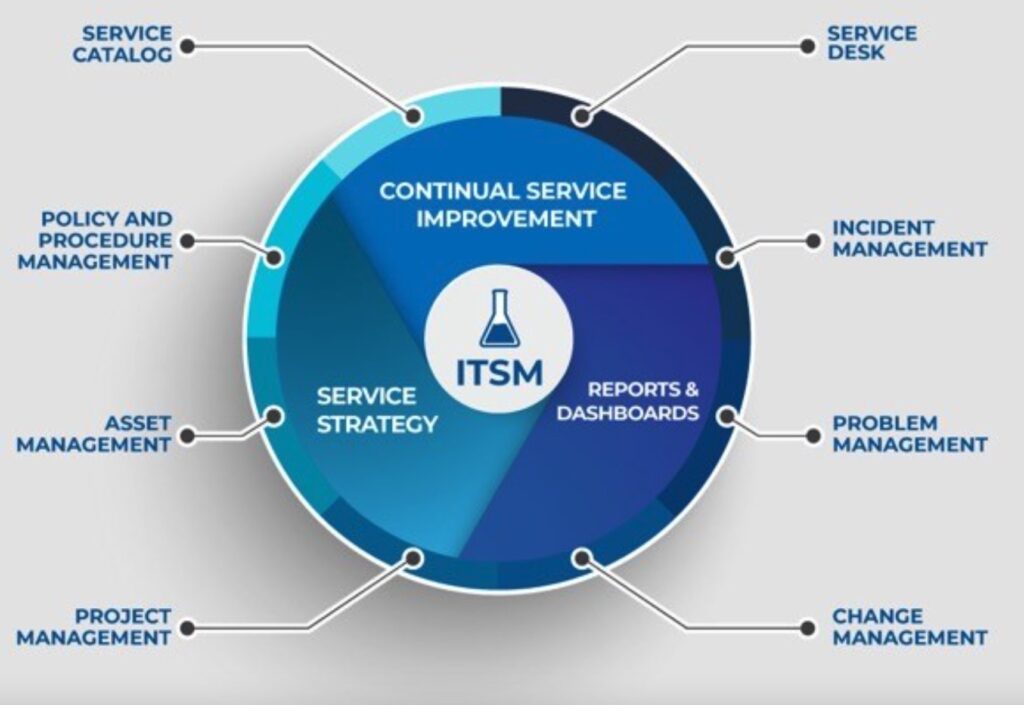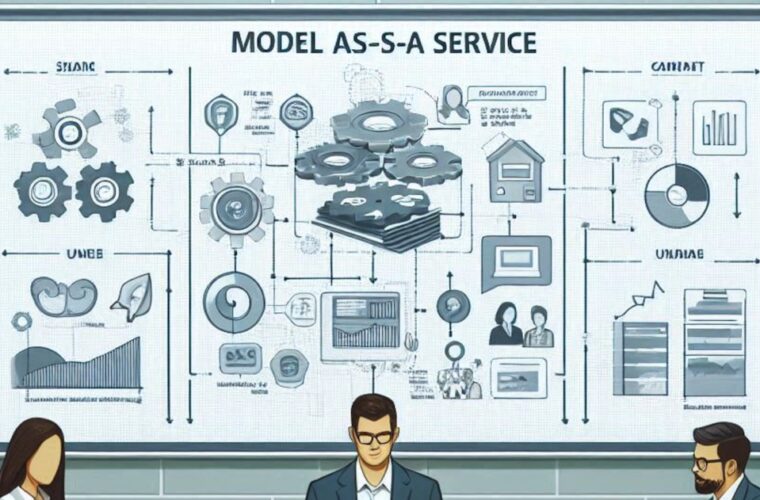IT Service Management (ITSM) is an umbrella term that describes a strategic approach to designing, delivering, managing, and improving the way organizations use IT. ITSM includes all the activities and processes supporting a service throughout its lifecycle, from service and change management to monitoring problems, incidents, assets, etc. An IT service provides access to information and processes to achieve important business objectives or otherwise deliver value. These include implementing and supporting business applications, designing and optimising IT infrastructure, and creating and managing processes such as help desk support and critical incident resolution procedures.
The central concept of ITSM is the belief that IT should be delivered as a service. A typical scenario might be a request for new hardware, such as a laptop, for which the user will submit a request through a portal, fill out a ticket with all the relevant information and initiate a workflow. That ticket funneled into the IT team’s queue, is sorted and routed based on importance. The benefits of such an approach are significant, especially because when IT processes are ordered and well-managed, organizations can spend less time on problems, speeding their resolution and devoting resources to strategic initiatives.
Because of their daily interactions with IT, people often misunderstand ITSM as basic IT support. On the contrary, ITSM teams oversee all types of technology in the workplace, from laptops to servers to business-critical software applications. There is a common line of thinking that a proper approach to ITSM should follow three steps: create and implement IT technology, introduce and enforce the right process, have people learn the technology, and comply with the process.
Difference between ITIL and ITSM
IT service delivery is generally discussed in terms of suppliers and customers, who interact through the service desk. A provider selects, designs, deploys, and manages the service, which can be an in-house IT department or a third-party specialist. A customer is any consumer of those services, such as an employee who accesses e-mail through the organization’s Web interface. Providers generally offer customers a list of available services. This usually begins with a need and a strategy, which requires clear guidance on the path forward. Services must then be designed and implemented, requiring the expertise of IT hardware and application engineers. Services must be monitored and tracked, and their problems resolved by IT administrators and helpdesk staff. KPIs for the service must be communicated, with recommendations for service changes and improvements, to the business using them.
ITIL
ITSM is often confused with ITIL. The IT Infrastructure Library (ITIL) is the policies and best practices for aligning IT services with business needs. ITIL thus represents a form of IT management and is the most widely used framework for this purpose. We can think of it as the standards defining how to approach a process. ITIL aims to make organizations more efficient so that they are driven by their goals and continuously improve. It serves as a guide for ITSM, although it only covers the basics.
ITIL covers all phases of the ITSM life cycle. The processes used are documented in 5 phases. Service strategy: defines the planning and preparation before services are provided and forms the basis for process setting. Po the Service Design: planning and designing IT services from provisioning to management. Third, Service Transition: focuses on all types of service transition from launch to change to commissioning. Then, the Service Operation describes the service desk and all related activities. Finally, Continuous Service Improvement covers all aspects of optimizations.

What about DevOps
These five areas provide a comprehensive basis for best practices and offer companies a starting point for their IT services. The distinction between the two terms is less about the what and more about the how, i.e., the relationship. Over time, ITSM has changed and evolved with the need for standardization across organizations. As ITSM has evolved, so have various frameworks, including ITIL, which is the most comprehensive and popular. IT teams leverage a variety of frameworks to guide their work. As mentioned earlier, IT Service Management is how IT teams manage the delivery of services to customers. A team’s approach to ITSM can be structured to align with ITIL practices and is also influenced by the concept of DevOps.
DevOps
ITIL is the most widely accepted approach to ITSM, which focuses on practices to align IT services with business needs. The path can help organizations adapt to ongoing transformation and scalability. ITIL 4, the recent update to the ITIL standards, represents a paradigm shift for IT teams. It guides teams toward a holistic, enterprise, customer value-based framework and encourages a more flexible approach based on how the enterprise works. Guiding principles promote collaboration, simplicity, and feedback. ITIL is sometimes misrepresented as “the rules,” rather than as a guide, open to interpretation.
We talked about DevOps: although DevOps includes continuous development, integration, and automated delivery, the concept is about building a culture of collaboration among teams that have historically functioned in relative compartments. Much of the context and ethos behind DevOps is about moving away from old divisions and working together collaboratively. Unfortunately, this is often seen as relevant only to “Dev” and not to “Ops.” ITSM and DevOps are generally pitted against each other. There is undoubtedly confusion about what ITSM and DevOps offer and how they might work together, but certainly, modern, high-performance teams will realize that the next step is being able to work smarter and faster while still following processes and control.
Tools and software for IT Service Management
We can count dozens of platforms for ITIL. Among the most prominent are SuperOps.ai, NinjaOne, and Jira. SuperOps.ai is a native combination of modern ticketing and intuitive asset management to deliver customer IT services. It is a one-stop solution for IT and service teams to manage tickets, inventory, billing, and assets in a single panel. It features an ever-growing ecosystem of third-party integrations, allowing you to extend the platform’s functionality and bring your technology stack closer together. NinjaOne offers a remote monitoring and management platform that supports all devices and users.
It has capabilities for RMM, endpoint management, patch management, backup, service desk, remote access, etc. It can provide real-time information on all IT resources. It will also help with IT documentation and software deployment. Jira is a perfect service desk solution for any team, including HR and legal. This platform is available both on-premises and in the cloud. And it is built for superior collaboration and automation.



